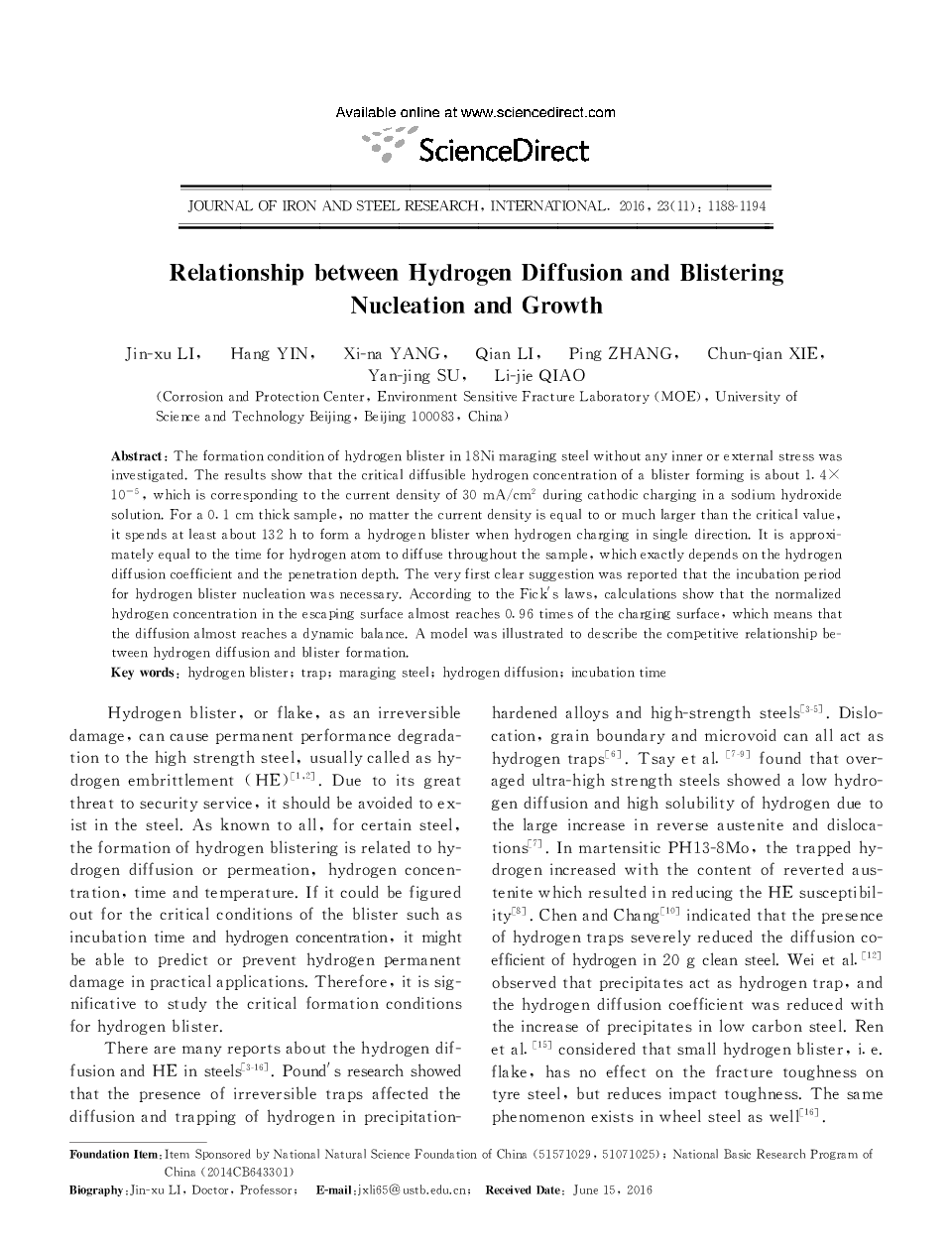| Article ID | Journal | Published Year | Pages | File Type |
|---|---|---|---|---|
| 8004434 | Journal of Iron and Steel Research, International | 2016 | 7 Pages |
Abstract
The formation condition of hydrogen blister in 18Ni maraging steel without any inner or external stress was investigated. The results show that the critical diffusible hydrogen concentration of a blister forming is about 1.4 Ã 10â5, which is corresponding to the current density of 30 mA/cm2 during cathodic charging in a sodium hydroxide solution. For a 0.1 cm thick sample, no matter the current density is equal to or much larger than the critical value, it spends at least about 132 h to form a hydrogen blister when hydrogen charging in single direction. It is approximately equal to the time for hydrogen atom to diffuse throughout the sample, which exactly depends on the hydrogen diffusion coefficient and the penetration depth. The very first clear suggestion was reported that the incubation period for hydrogen blister nucleation was necessary. According to the Fick's laws, calculations show that the normalized hydrogen concentration in the escaping surface almost reaches 0.96 times of the charging surface, which means that the diffusion almost reaches a dynamic balance. A model was illustrated to describe the competitive relationship between hydrogen diffusion and blister formation.
Related Topics
Physical Sciences and Engineering
Materials Science
Metals and Alloys
Authors
Jin-xu LI, Hang YIN, Xi-na YANG, Qian LI, Ping ZHANG, Chun-qian XIE, Yan-jing SU, Li-jie QIAO,
